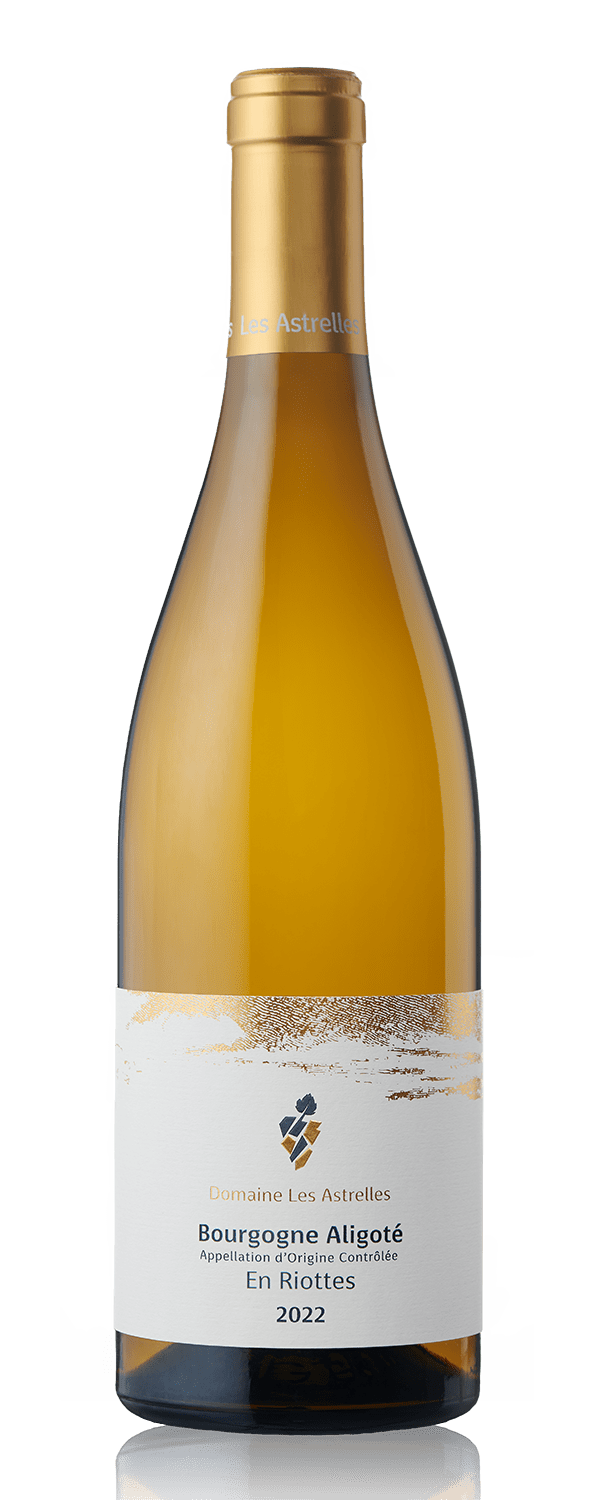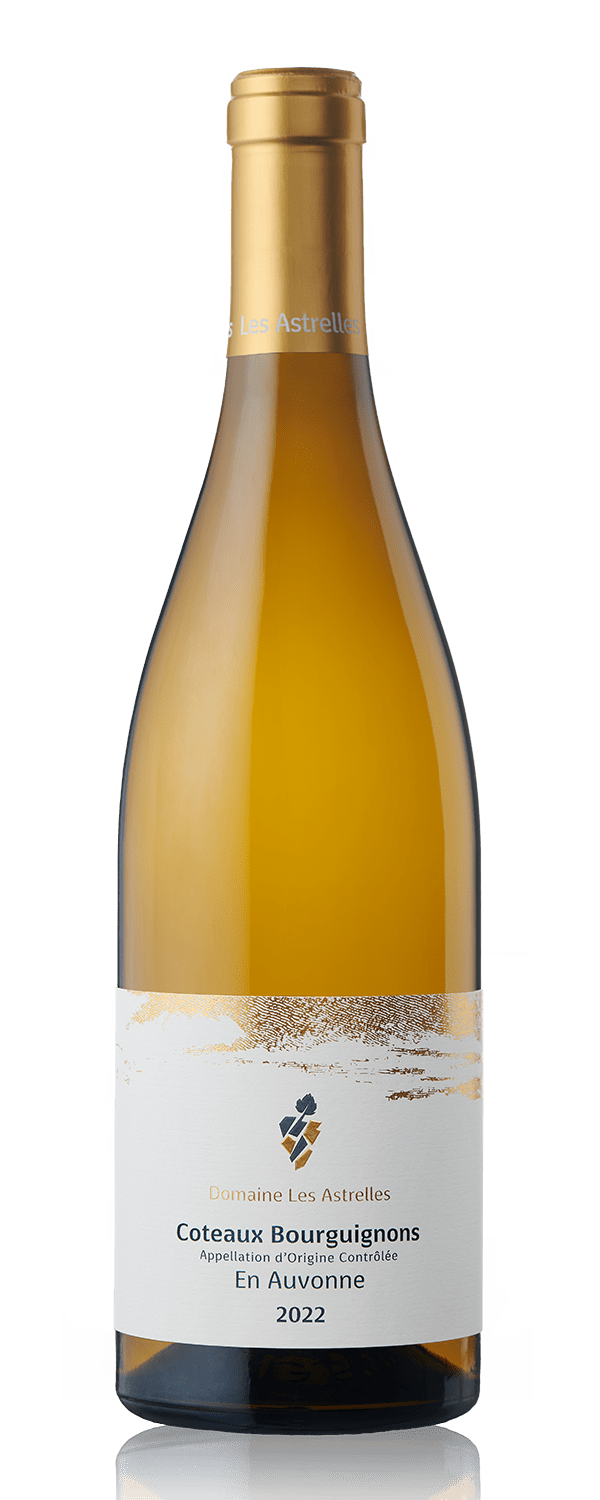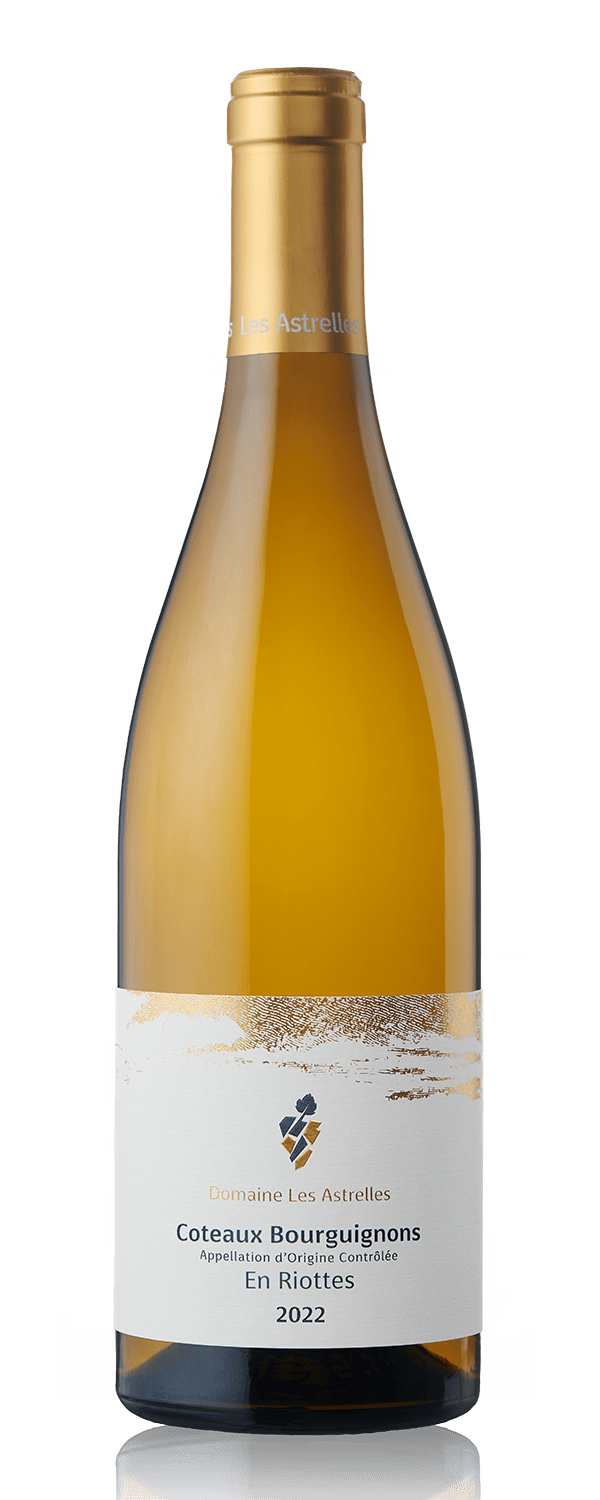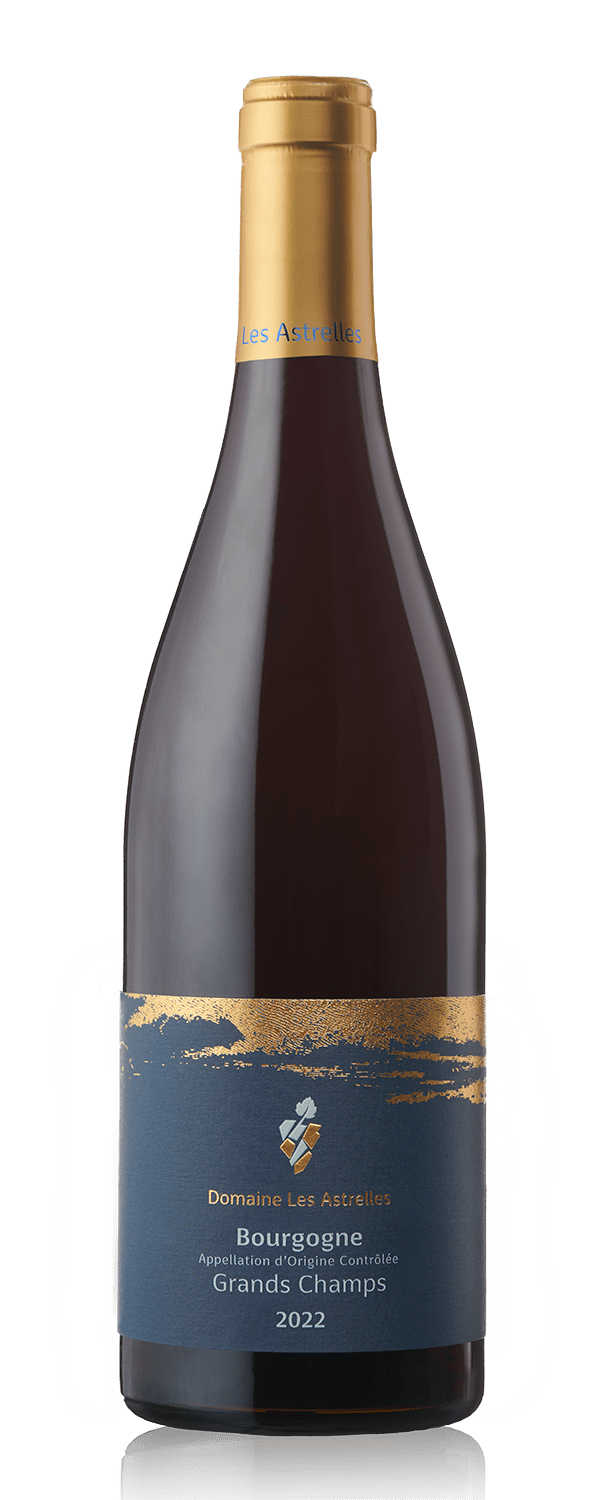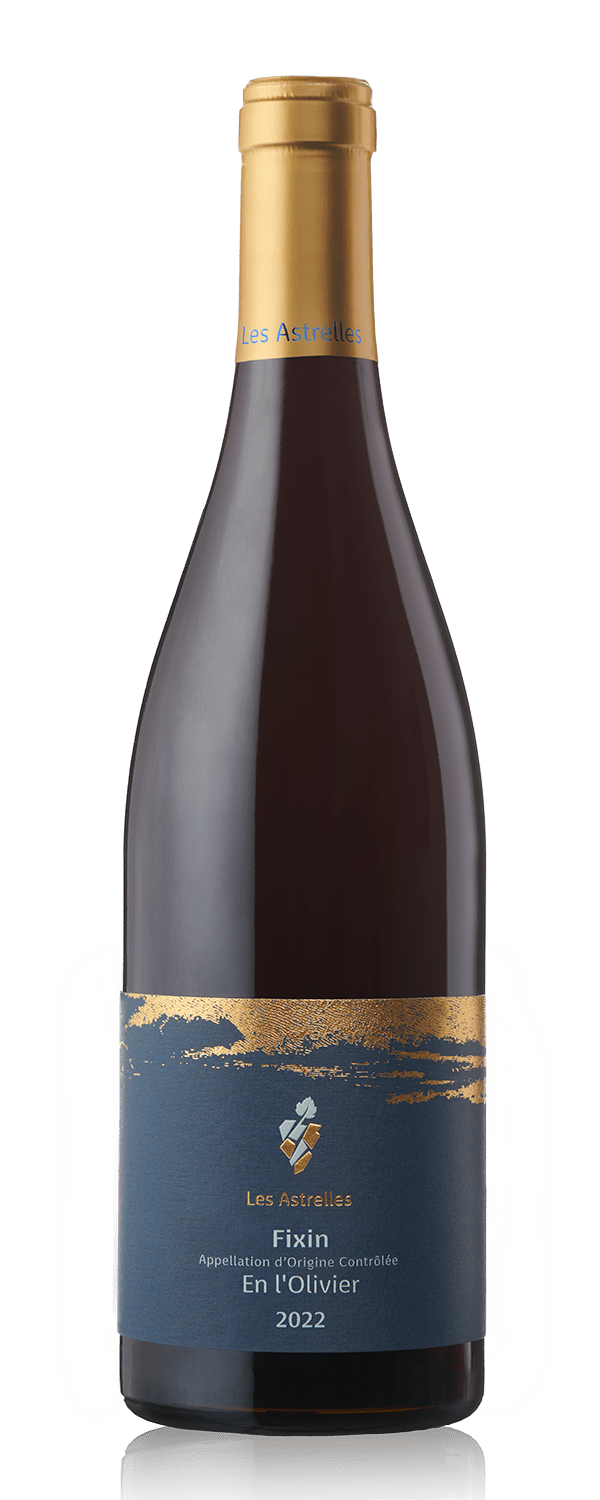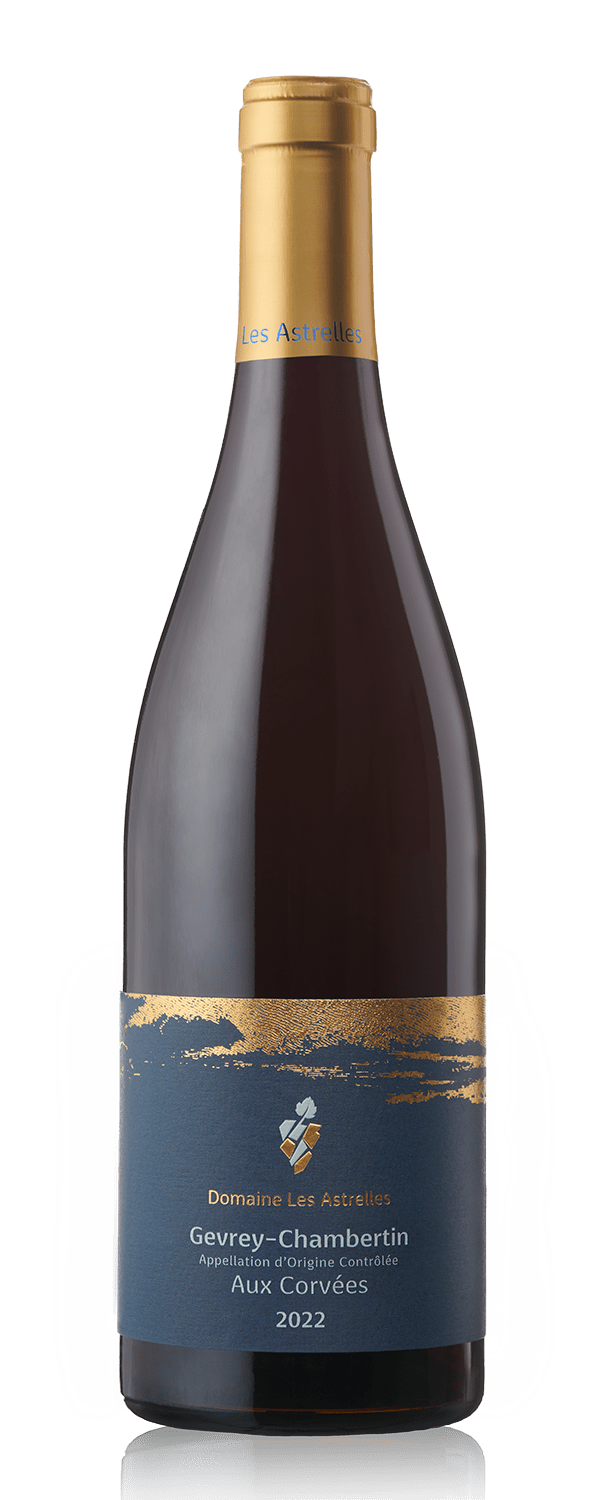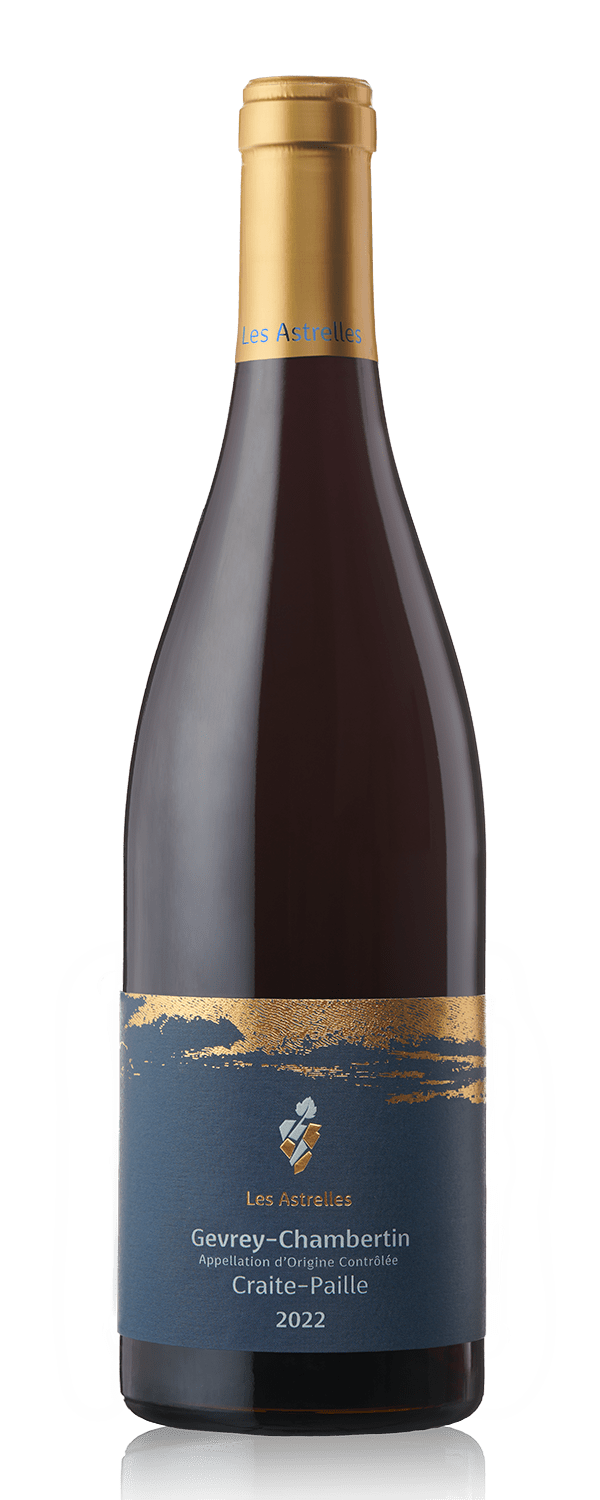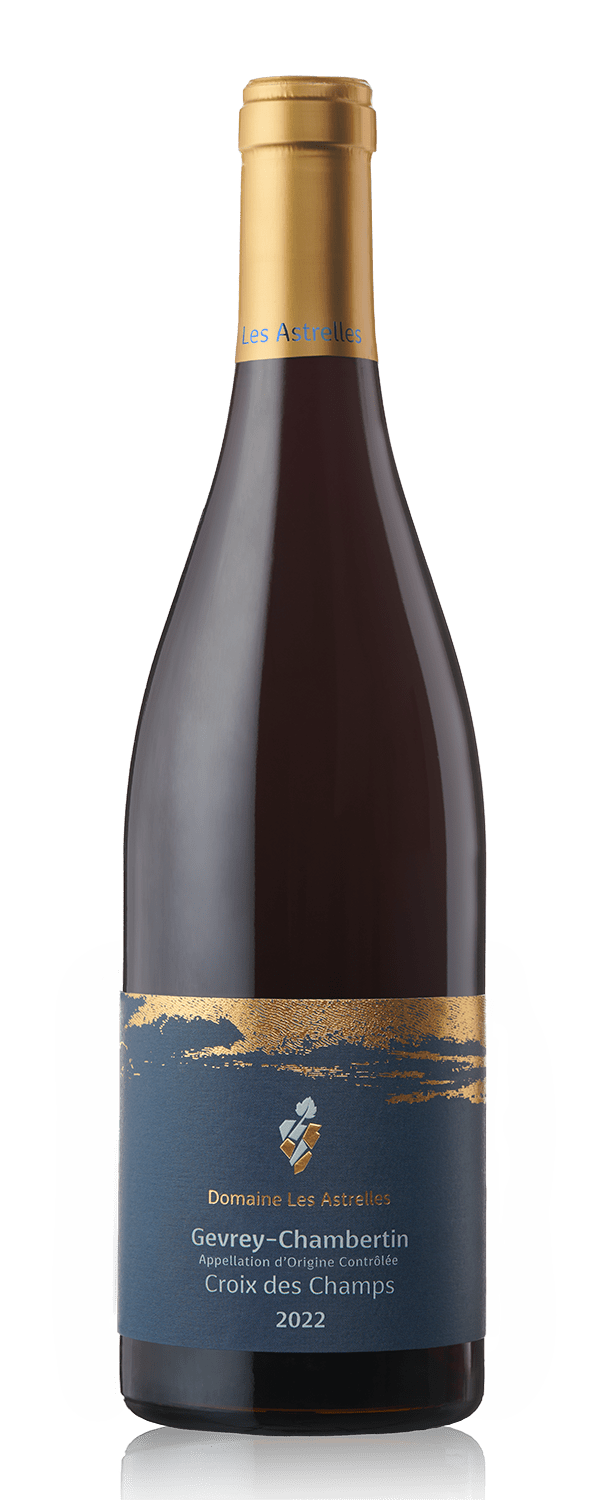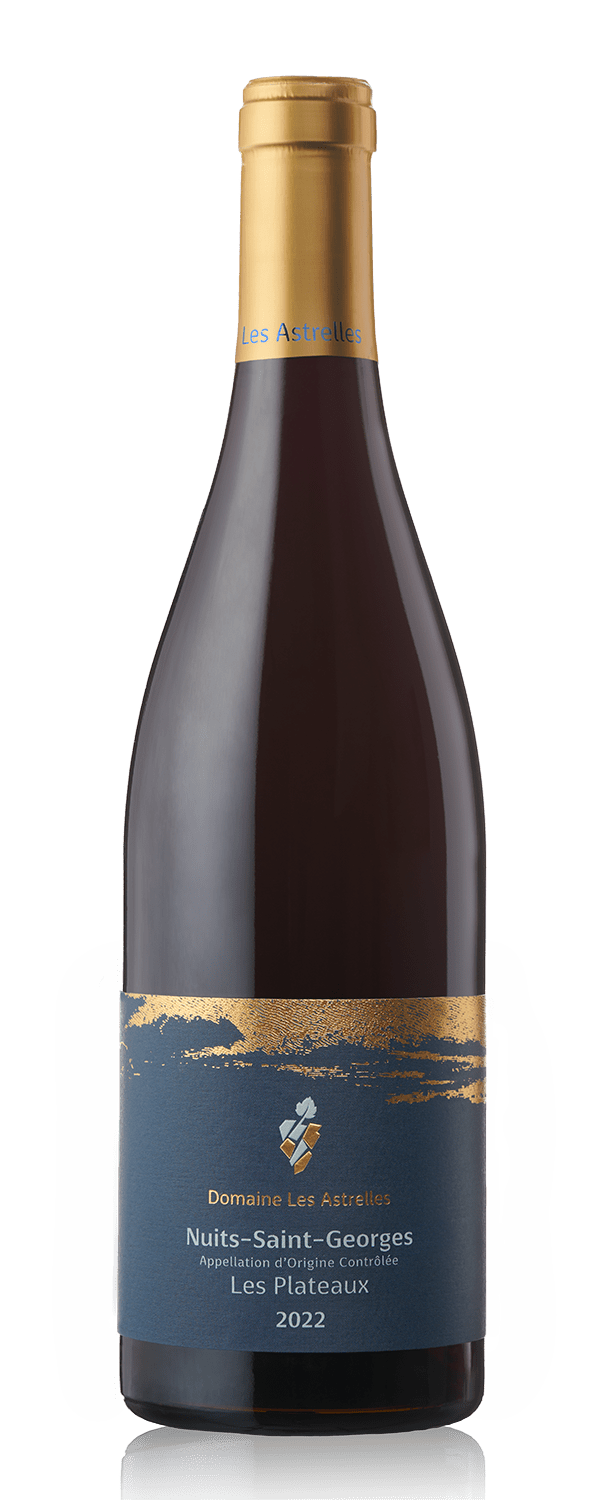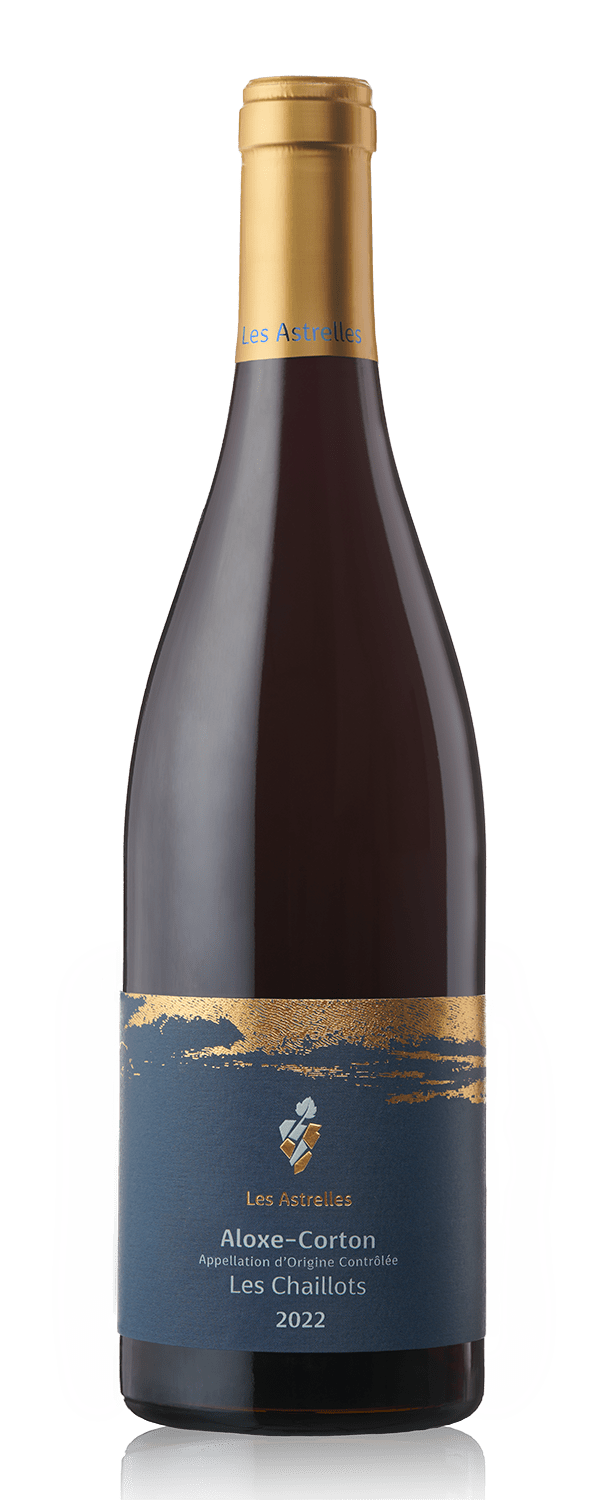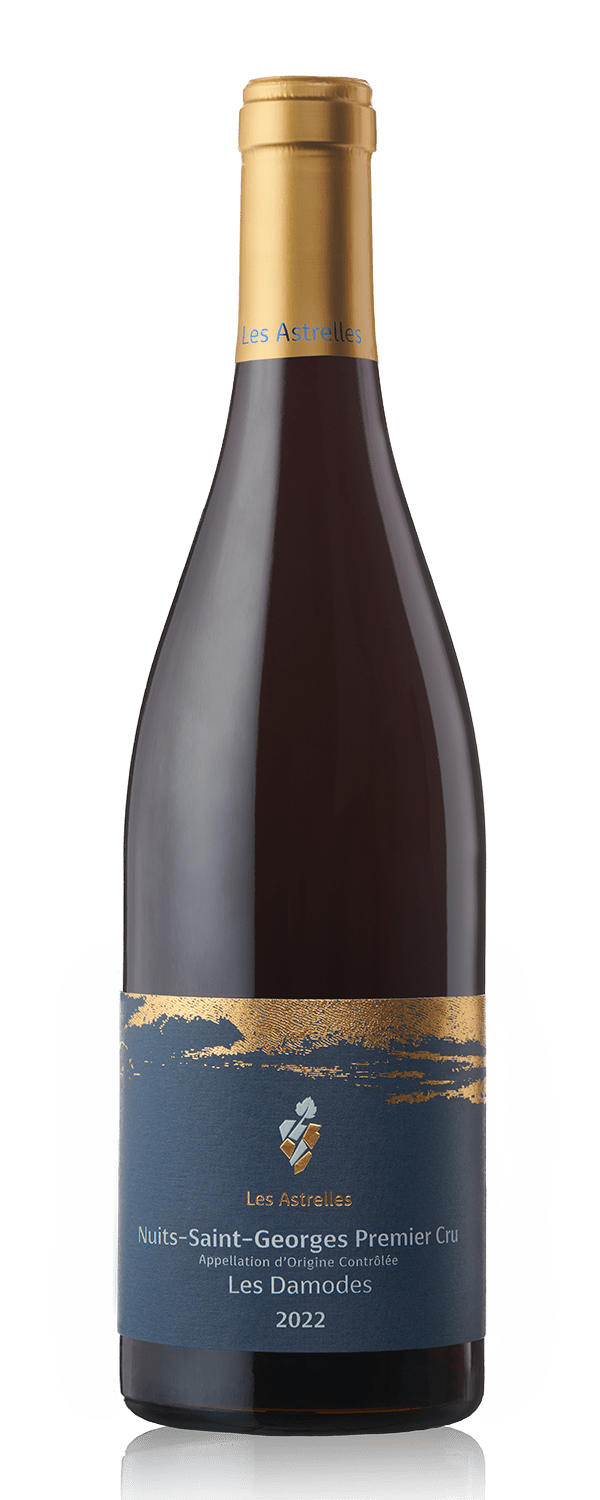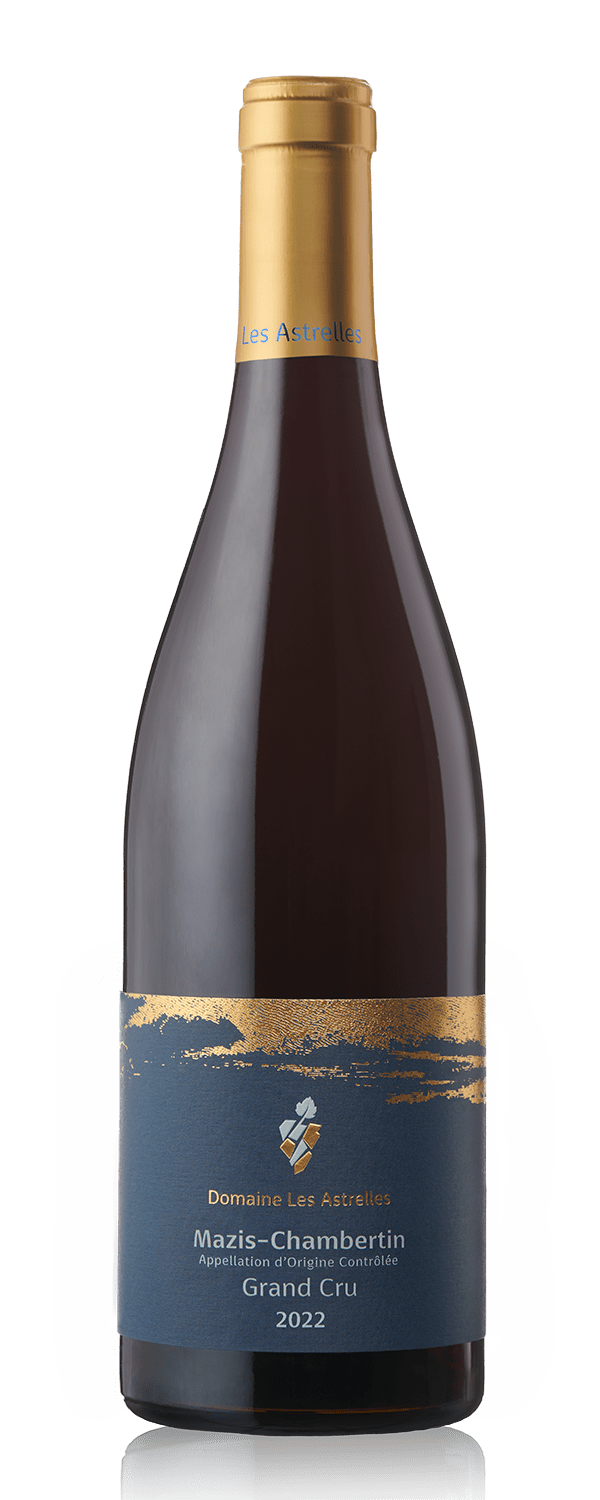
Domaine Les Astrelles
Gevrey - Chambertin
Meet the producer
Domaine Les Astrelles, formerly Pierre Naigeon, situated in Gevrey-Chambertin, has undergone significant changes since 2019 under owners Isabelle and Jean-Marie Chapier.
They've assembled a dynamic team, with Isabelle overseeing administrative and accounting tasks. Joining in April 2020, winemaker Julien Millet, supported by Alex Debruere, leads cellar operations alongside Xavier Champsaur, contributing to cellar work and order preparations.
Sophie Genot manages commercial, administrative, and customs aspects since October 2020. In 2022, Gaylord Boyeaux joined as vineyard team leader.
The winery is undergoing further development, with a new facility set to be completed by August this year. Presently, Domaine Les Astrelles manages about 14 hectares of organically cultivated vineyards across Gevrey-Chambertin, Bourgogne, Marsannay, and Fixin.
They also maintain a conscientious négociant segment, emphasizing hand-harvesting and close relationships with winegrowers.

The Estate’s philosophy
The domain’s goal is to carefully make both white and red wines to showcase the essence of each terroir.
The white wines begin with grapes sorted in the vineyard and pressed in a pneumatic press. The must is settled in stainless steel tanks, with precise temperature control during fermentation. They ferment the wines using indigenous yeasts in oak barrels, acacia barrels, and clayver ceramic tanks, adjusting the container type to match each terroir's personality.
To enhance freshness and fruit purity, they use ceramic tanks, contributing to their efforts in combating climate change effects. Like their red wines, aging for their white wines lasts 15 months, revealing their full potential.
For the production of red wines, every grape is handpicked and rigorously sorted in the vineyard before being destemmed.
They are fermented in stainless steel and concrete tanks for 15 to 20 days using indigenous yeasts. Throughout fermentation, the team conduct gentle pump-overs, ensuring the delicate extraction of Pinot Noir’s flavors.
Their extraction method emphasizes infusion, managed with daily tastings to maintain optimal balance. Following the fermentation, they press the wines using a pneumatic press and age each cuvée for around 15 months, with minimal new oak to preserve the wine's identity.
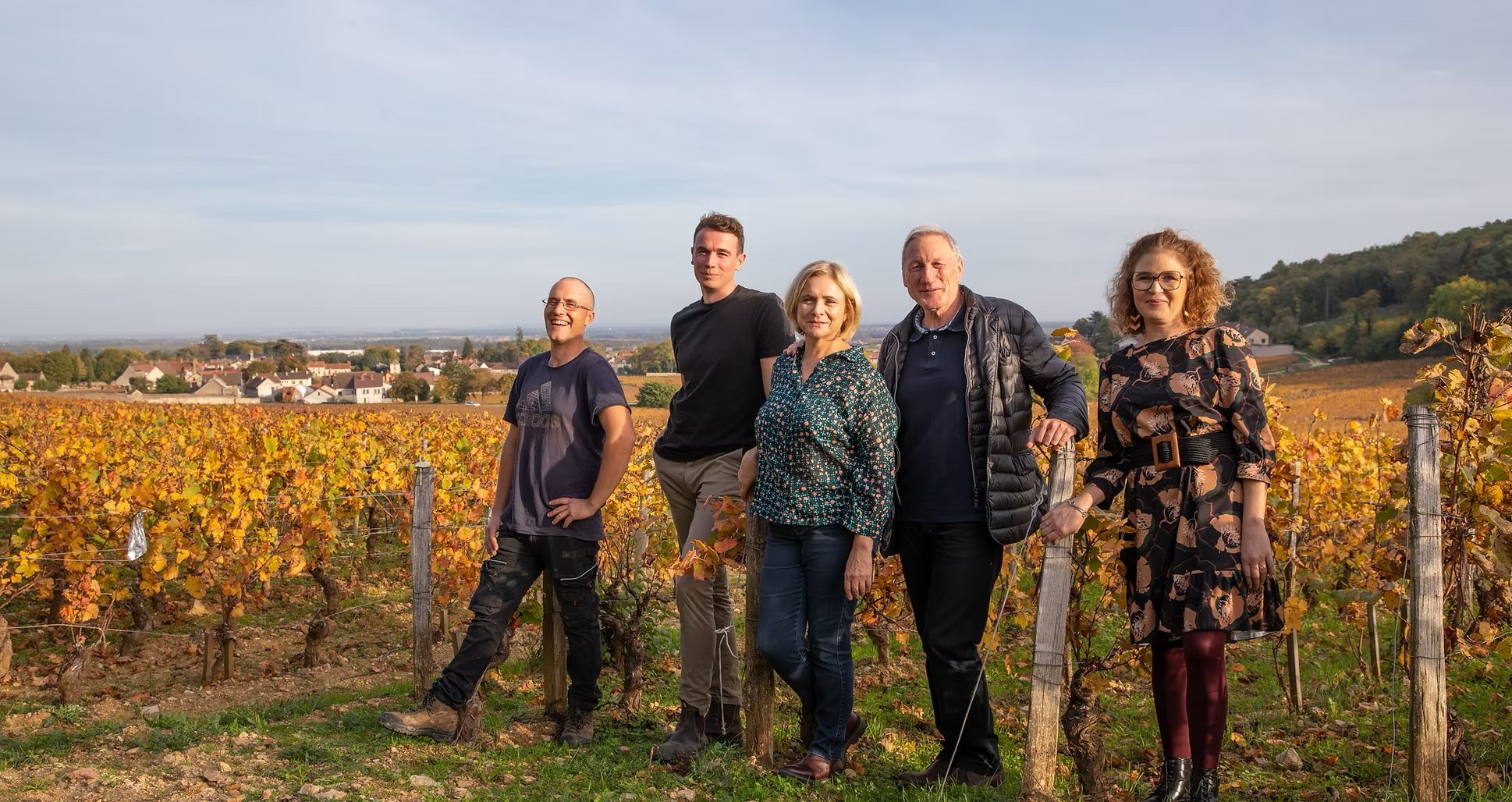
Key information
-
The estate is located in Gevrey-Chambertin, Côte de Nuits, Bourgogne
-
Pinot Noir, Chardonnay, Aligoté, Pinot Gris, Pinot Blanc, Gamay
-
The domain currently cultivates around 14 hectares of vineyard and they buy grapes to complete their range.
-
Sustainable viticulture.
Cuvées
GENERIC WINES
-
![BOURGOGNE ALIGOTÉ "EN RIOTTES" ORGANIC]()
Bourgogne Aligoté "En Riottes"
This wine originates from Segrois in the Hautes Côtes de Nuits region. Spanning 0.73 hectares, it's cultivated through long-term leasing. The terroir showcases a semi-continental climate with a western exposure, featuring white marl on a bedrock of white limestone, ideal for the Aligoté grape variety. With 20-year-old vines trained in high vines and pruned in double guyot, the vineyard ensures quality. Manual harvesting and meticulous sorting precede alcoholic and malolactic fermentation in oak barrels and ceramic tanks without stirring. Ageing occurs for 15 months, with 10% in ceramic tanks, 85% in oak barrels, and 5% in new acacia barrels.
-
![BOURGOGNE ALIGOTÉ "LES CHAILLOTS"]()
Bourgogne Aligoté "Les Chaillots"
This wine is cultivated through sustainable agriculture and lies south of Nuits-Saint-Georges at an altitude of 236 meters. Operating through grape purchase, the vineyard benefits from an oceanic climate with a semi-continental climate and an eastern exposure. Its soil, clay-limestone with a significant presence of calcaire à chaille, nurtures 65-year-old Aligoté vines pruned using the Guyot method. Manual harvesting and rigorous vineyard sorting precede alcoholic and malolactic fermentation in barrels without stirring. Ageing occurs in oak barrels without new ones. The annual production is around 300 bottles.
-
![BOURGOGNE ALIGOTÉ "LA COMBE GUYOT"]()
Bourgogne Aligoté "La Combe Guyot"
This wine is crafted through sustainable agriculture methods. The vineyard is nestled at the foot of the slope in the commune of Fixin, standing at an altitude of 226 meters. Operated through grape purchasing, the terroir benefits from an oceanic climate with a semi-continental climate, boasting an eastern exposure. The soil, a blend of clay-limestone, predominantly features clayey loams sourced from the Courtavaux stream and limestone scree. Aligoté vines, aged 25 years on average, are meticulously tended using the Guyot pruning system. Harvesting is carried out manually, with grapes rigorously sorted at the parcel.
-
![Bourgogne Aligoté "La Mouille"]()
Bourgogne Aligoté "La Mouille"
Nestled at the base of the slope in Fixin, the vineyard sits at an altitude of 267 meters, covering an area of 0.45 hectares. Operated as a proprietary estate, the terroir benefits from an oceanic climate with a semi-continental climate and an eastern exposure. The soil comprises scree over Bresse marl. Aligoté vines, aged 15 years, are meticulously managed using the Guyot pruning system. Harvesting is performed manually, with grapes meticulously sorted. Alcoholic and malolactic fermentation occurs in oak barrels/ceramic vats without stirring. Ageing is carried out with 10% in clay vessels, 80% in oak barrels, and 10% in acacia barrels, followed by light fining and filtration.
-
![BOURGOGNE ALIGOTÉ "LES LARES"]()
Bourgogne Aligoté "Les Lares"
The wine is produced through sustainable agriculture practices. This wine originates from the commune of Curtil-Vergy, situated at an elevation of 350 meters. Operated through grape procurement, the vineyard benefits from an oceanic climate with semi-continental influences, boasting an eastern exposure. The soil composition consists of limestone marls, enriched with a significant proportion of white clays. The Aligoté vines, aged 40 years, are meticulously tended using the Guyot pruning method. Harvesting involves manual selection directly at the vineyard, ensuring only the finest grapes are chosen.
-
![Bourgogne Blanc "Les Closeaux"]()
Bourgogne Blanc "Les Closeaux"
Cultivated through sustainable agriculture, the vineyard lies east of the village of Puligny-Montrachet, at an altitude of 225 meters. Operating through must purchasing, the vineyard enjoys an oceanic / semi-continental climate and a southeastern exposure. Its soil, clay-limestone with a dominance of clay and silt, as well as screen from the slope, nourishes 35-year-old Chardonnay vines pruned using Guyot method. The winemaking process involves alcoholic and malolactic fermentation in barrels without stirring. Ageing happens in oak barrels for 13 months, with 25% new barrels, followed by light fining and filtration. The annual production is around 1000 bottles.
-
![Bourgogne Hautes-Côtes de Nuits Blanc "Les Martennes"]()
Bourgogne Hautes-Côtes de Nuits Blanc "Les Martennes"
This organic certified wine is made from grapes sourced from the slopes of the Hautes Côtes de Nuits, nestled on the forest edge north of Segrois. The vineyard sits at a lofty altitude of 345 meters, covering a modest 0.4 hectares and operating under long-term lease agreements. Benefiting from an oceanic climate with semi-continental influences and a western exposure, the terroir comprises white marls and limestone scree, enriched by limestone from the Mantuan forest. These conditions provide an ideal environment for Chardonnay vines, which boast an average age of 30 years and are meticulously tended using the double Guyot pruning system.
-
![Coteaux Bourguignons Blanc "En Auvonne"]()
Coteaux Bourguignons Blanc "En Auvonne"
The wine is meticulously crafted through organic farming practices. This vineyard is situated in the commune of Couchey, at an altitude of 260 meters, covering an area of 0.15 hectares. Operated under a long-term lease agreement, the vineyard benefits from an oceanic climate with semi-continental influences and eastward exposure. The soil and subsoil consist of scree from a cone on Bresse marls. A blend of 75% Chardonnay and 25% Pinot Gris, the vines, averaging 30 years of age, are meticulously pruned using the Guyot method. Harvesting is carried out manually, with grapes delicately selected and placed in small crates, followed by rigorous manual sorting.
-
![Coteaux Bourguignons Blanc "En Riottes"]()
Coteaux Bourguignons Blanc "En Riottes"
The wine comes from a vineyard which is cultivated through long-term leasing, it is located south of the commune of Segrois, at an altitude of 320 meters, covering 0.83 hectares. The vineyard benefits from an oceanic climate with a semi-continental climate and a western exposure. Its soil, marly and limestone, with a higher proportion of marls, provide an ideal environment for 5-year-old vines consisting of 50% Pinot Blanc and 50% Pinot Gris, pruned using the guyot method. Manual harvesting precedes alcoholic and malolactic fermentation in barrels or ceramic tanks without stirring.
-
![Coteaux Bourguignons Blanc "Terreau Thomas"]()
Coteaux Bourguignons Blanc "Terreau Thomas"
Produced following strict organic farming principles, this vineyard is nestled in the commune of Boncourt-le-Bois, covering an area of 0.44 hectares. Operated under a long-term lease agreement, the vineyard benefits from an oceanic climate with semi-continental influences and an eastern exposure. The soil and subsoil are characterized by scree from a cone on Bresse marls, predominantly clayey with limestone debris. Exclusively crafted from Chardonnay grapes, the vines, aged just 5 years, are meticulously pruned using the Guyot method. Harvesting is carried out manually, with grapes carefully collected.
-
![Bourgogne "Les Athets"]()
Bourgogne "Les Athets"
The wine is produced with organic farming practices. This wine originates from the base of the slope, adjacent to the Chambolle-Musigny area, at an altitude of 247 meters, covering an area of 0.47 hectares. Operated under a long-term lease agreement, the vineyard benefits from an oceanic climate with semi-continental influences and eastern exposure. The soil and subsoil consist of alluvial sandy loams on Bresse marls, with a significant proportion of clay and scree from the Chambolle valley. The vines, aged 40 years, are managed with Guyot pruning. Harvesting involves manual selection into small crates, followed by meticulous sorting by hand.
-
![Bourgogne "Aux Azellerois"]()
Bourgogne "Aux Azellerois"
This cuvée is produced through sustainable agriculture, and originates east of the village of Fixin, at an altitude of 268 meters. Operating through grape purchasing, the vineyard benefits from an oceanic climate with a semi-continental climate and a southeastern exposure. Its soil, clay-limestone with significant clay content, nurtures Pinot Noir vines aged between 25 and 55 years, pruned using the Guyot method. Manual harvesting in small crates and rigorous hand sorting precede alcoholic fermentation with 100% destemmed grapes and indigenous yeasts. Ageing happens in oak barrels for 15 months, including 15% new barrels. The annual production is around 2000 bottles.
-
![Bourgogne "Grands Champs"]()
Bourgogne "Grands Champs"
This wine hails from the southeastern region of Gevrey-Chambertin, at an altitude of 255 meters, covering 0.41 hectares. It benefits from an oceanic climate with semi-continental influences and an eastern exposure. The soil, characterized by gravel cones on Bresse marl with clay, provides a nurturing environment for 55-year-old Pinot Noir vines pruned using the Guyot method. The winemaking process involves manual harvesting in small crates, followed by meticulous hand sorting. Fermentation occurs with 100% destemmed grapes with indigenous yeasts. Ageing happens in oak barrels for 15 months without new barrels. The annual production is around 2600 bottles.
-
![Bourgogne "Les Maladières"]()
Bourgogne "Les Maladières"
The wine is produced with a commitment to organic farming practices. Nestled at the base of the slope, bordering the Chambolle-Musigny area, this vineyard sits at an altitude of 247 meters, covering an area of 0.23 hectares. Operated under a long-term lease agreement, the vineyard benefits from an oceanic climate with semi-continental influences and eastward exposure. The soil and subsoil are characterized by sandy alluvial loams on Bresse marls, with scree from the Chambolle-Musigny valley. Adjacent to "Les Athets," "Les Maladières" features more scree from the valley. The Pinot Noir vines, averaging 20 years of age, are pruned using the Guyot method.
-
![Bourgogne "Les Combes"]()
Bourgogne "Les Combes"
The wine is produced with organic farming practices. This wine originates from the foothills of the commune of Flagey Echezeaux, at an altitude of 239 meters, covering an area of 0.32 hectares. Operated under a long-term lease agreement, the vineyard benefits from an oceanic climate with a semi-continental climate and southeast exposure. The soil is composed of various types of limestone mixed with red clay marl. Situated on a small relief, the soil also contains limestone from the Orveaux valley. The 35-year-old vines are pruned using the Guyot method. Harvesting is carried out manually, with the grapes carefully selected and placed in small crates, followed by manual sorting.
-
![Bourgogne "Les Grands Chaillots"]()
Bourgogne "Les Grands Chaillots"
Cultivated through sustainable agriculture, the vineyard is located south of the village of Nuits-Saint-Georges, at an altitude of 239 meters, covering 0.32 hectares. Operating through grape purchasing, the vineyard benefits from an oceanic climate with a semi-continental climate and an eastern exposure. Its soil, clay-limestone with a significant presence of chailles (siliceous concretions), nurtures 45-year-old Pinot Noir vines pruned using the Guyot method. The winemaking process involves manual harvesting in small crates to preserve the grapes, followed by meticulous hand sorting. Fermentation occurs with 100% destemmed grapes with indigenous yeasts.
-
![Bourgogne Passe-Tout-Grains "En Riottes"]()
Bourgogne Passe-Tout-Grains "En Riottes"
The wine is produced with organic farming practices. This wine originates from the Hautes Côtes de Nuits, situated just south of the Segrois commune at an altitude of 330 meters, covering an area of 1.12 hectares. Operated under a long-term lease agreement, the vineyard benefits from an oceanic climate with semi-continental influences and western exposure. The soil composition is primarily characterized by white marls and debris of white limestone. The vineyard is planted with equal parts Pinot Noir and Gamay vines, both aged 25 years and pruned using the double Guyot method. Harvesting involves manual selection into small crates, followed by meticulous manual sorting.
-
![Bourgogne Hautes-Côtes de Nuits "Les Martennes"]()
Bourgogne Hautes-Côtes de Nuits "Les Martennes"
This wine comes from the northern part of Segrois, situated in the Hautes-Côtes de Nuits, on steep slopes at an altitude of 340 meters, covering 1.65 hectares. Cultivated through long-term leasing, the vineyard benefits from an oceanic climate with a semi-continental climate and a western exposure. Its soil, a blend of white marl and white limestone scree in equal proportions, provides a perfect environment for 25-year-old Pinot Noir vines trained in high vines and pruned using the double Guyot method. The winemaking process involves manual harvesting in small crates to preserve the grapes, followed by meticulous hand sorting.
-
![Bourgogne Hautes-Côtes de Nuits]()
Bourgogne Hautes-Côtes de Nuits
The wine is produced through organic farming practices. This wine hails from the Segrois region, nestled on steep slopes with a pronounced incline. It is a blend of two parcels: En Riottes, located south of the village of Segrois (Altitude: 332 m), and Petite Vigne, situated above Riottes at the top of the slope (Altitude: 345 m). The total surface area spans 3 hectares. Operated under a long-term lease agreement, the vineyard benefits from an oceanic climate with semi-continental influences. The western exposure allows for optimal sun exposure. The soil, primarily composed of limestone with debris from the Mantuan forest, exhibits varying proportions of limestone and clay.

APPELLATION WINES
-
![Fixin "L'olivier"]()
Fixin "L'olivier"
This wine is made through sustainable agriculture methods. This vineyard is situated in the renowned Côte de Nuits area, above the hamlet of Fixey, at an altitude of 330 meters. Operated through grape purchase agreements, the vineyard benefits from an oceanic climate with semi-continental influences and an eastern exposure. The soil composition consists of limestone with entroques and clay-loam-sandy soil, featuring a thin layer of limestone. Exclusively crafted from Pinot Noir grapes sourced from 30-year-old vines, the vineyard is meticulously managed with Guyot pruning.
-
![FIXIN "LES HERBUES"]()
Fixin "Les Herbues"
The wine comes from a vineyard which is cultivated through sustainable agriculture, it is situated on the hillside in the northern part of the Fixin appellation, at an altitude of 305 meters, covering 0.20 hectares. Operating through grape purchasing, the vineyard benefits from an oceanic climate with a semi-continental climate and an eastern exposure. Its soil, consisting of scree from limestone cones on sandy marls from the Lias period and clay-loam-sandy soil, thick and hydromorphic in-depth, provides an excellent environment for 30-year-old Pinot Noir vines are pruned using the Guyot method.
-
![Gevrey-Chambertin "Les Crais"]()
Gevrey-Chambertin "Les Crais"
This wine is made following organic practices. Nestled to the east of Gevrey-Chambertin, this vineyard sits at an altitude of 256 meters, covering an area of 0.35 hectares. The vineyard operates with a combination of 3/4 ownership and 1/4 long-term lease agreements. Benefitting from an oceanic climate with semi-continental influences, it faces eastward. The soil composition comprises sandy loam and marl, interspersed with limestone pebbles eroded from the hillside, with a notable presence of limestone rocks. Exclusively cultivated with Pinot Noir grapes from 45-year-old vines, the vineyard employs Guyot pruning techniques to manage vine growth.
-
![Gevrey-Chambertin "Aux Corvées"]()
Gevrey-Chambertin "Aux Corvées"
This wine is made following organic practices. Situated to the south of the village of Gevrey-Chambertin, this vineyard lies at an altitude of 265 meters, covering an area of 0.20 hectares. Operated under long-term lease agreements, the vineyard benefits from an oceanic climate with semi-continental influences, facing eastward. Its soil composition is a complex blend of loams and limestone scree originating from the Lavaut Valley alluvial fan. Exclusively dedicated to Pinot Noir grapes harvested from 40-year-old vines, the vineyard is trained using Guyot pruning methods. Harvesting is meticulously done by hand, utilizing small crates to avoid grapes spoilage, followed by a rigorous manual sorting process.
-
![Gevrey-Chambertin "Creux Brouillard"]()
Gevrey-Chambertin "Creux Brouillard"
This wine is produced in a 0.73-hectare vineyard located east of the National Road and south of the village of Gevrey-Chambertin, at an altitude of 263 meters. The vineyard is both owned and leased for long-term cultivation. The terroir benefits from an oceanic climate with a semi-continental climate and an eastern exposure, with clay-limestone soil containing limestone pebbles from the Combe de Lavaux alluvial soil. The 50-year-old vines are pruned using the Guyot method. The grapes are harvested manually in small crates to avoid spoilage, undergo rigorous manual sorting, and are then 100% destemmed before undergoing alcoholic fermentation with indigenous yeasts.
-
![Gevrey-Chambertin "En Pallud"]()
Gevrey-Chambertin "En Pallud"
This wine is produced using sustainable agriculture methods, and comes from a 0.41-hectare vineyard situated mid-slope south of the village of Gevrey-Chambertin, beneath the premier crus, at an altitude of 274 meters. The vineyard is operated through leasing and grape purchase. Sharing a similar terroir, it benefits from an oceanic climate with semi-continental influences and an eastern exposure. The soil consists of limestone with marl and loam. Planted with Pinot Noir, the vines range from 40 to 90 years old, pruned using the Guyot method. Grapes are harvested manually, sorted rigorously, and undergo 100% destemmed grapes fermentation with indigenous yeasts.
-
![Gevrey-Chambertin "En Vosne"]()
Gevrey-Chambertin "En Vosne"
This wine is made from a parcel originating from a 0.13-hectare vineyard located mid-slope on the northern part of Gevrey-Chambertin, at an altitude of 288 meters. This vineyard is both owned and leased for long-term cultivation. Sharing the region's oceanic climate with a semi-continental climate, it faces southeast and east exposures. The soil is composed of limestone with marl and micaceous quartz marls. The 60-year-old vines are pruned using the Guyot method. Grapes are hand-harvested in small crates, undergo rigorous manual sorting, and experience 100% destemmed grapes fermentation with indigenous yeasts.
-
![Gevrey-Chambertin "Craite-Paille"]()
Gevrey-Chambertin "Craite-Paille"
The wine is produced through grape purchasing and originates from a plot located northeast of Gevrey-Chambertin, with an altitude of 246 meters for Craite-Paille. The vineyard benefits from an oceanic climate with a semi-continental climate and an eastern exposure. Its soil, clay-limestone, is highly rocky, with limestone pebbles originating from the Combe Lavaux. The vines, averaging 60 years old, are pruned using the guyot method. Manual harvesting in small crates and meticulous hand sorting precede alcoholic fermentation through 100% destemmed grapes with indigenous yeasts.
-
![Gevrey-Chambertin "Croix des Champs"]()
Gevrey-Chambertin "Croix des Champs"
The wine is produced from estate-owned vineyards, and is situated just south of the village of Gevrey-Chambertin, at an altitude of 257 meters, covering 0.47 hectares. The vineyard benefits from an oceanic climate with a semi-continental climate and an eastern exposure. Its soil, deep and clayey with limestone scree from the Combe Lavaux, provides an ideal environment for Pinot Noir vines averaging 60 years old, pruned using the guyot method. Manual harvesting in small crates and meticulous hand sorting precede alcoholic fermentation through 100% destemmed grapes with indigenous yeasts.
-
![GEVREY-CHAMBERTIN "EN SYLVIE"]()
Gevrey-Chambertin "En Sylvie"
The wine is produced from a vineyard located north of the village at an altitude of 269 meters, covering 0.18 hectares. The vineyard, managed through both estate-owned and long-term lease practices, benefits from an oceanic climate with a semi-continental climate and an eastern exposure. Its soil composition includes Comblanchien limestone partially covered by scree from the Combe Lavaux, providing a suitable environment for Pinot Noir vines with an average age of 70 years, pruned using the Guyot method. Manual harvesting in small crates and rigorous hand sorting precede alcoholic fermentation through 100% destemmed grapes with indigenous yeasts.
-
![Gevrey-Chambertin Village]()
Gevrey-Chambertin Village
This wine is a blend of five specific sites: Reniard, Croix des Champs, Creux Brouillard, En Sylvie, and Meix Bas, spanning from south to north within the Gevrey Chambertin appellation. These sites vary in altitude, ranging from 250 meters at Reniard to 323 meters at Meix Bas, covering a total area of 0.41 hectares. The vineyard management involves both estate-owned and long-term lease practices. The terroir benefits from an oceanic climate and an eastern exposure. The soil composition includes clay-limestone. Reniard features scree from the Combe Lavaux, while Meix Bas consists of limestone soil, and Marchais is composed of Prémeaux limestone with some clay.
-
![NUITS-SAINT-GEORGES "LES PLATEAUX" ORGANIC]()
Nuits-Saint-Georges "Les Plateaux"
The grapes to produce this wine are sourced from a steep hillside south of Nuits-Saint-Georges, cultivated on terraces at an altitude of 260 meters, covering a modest 0.24 hectares. The vineyard operates under long-term lease agreements, benefiting from an oceanic climate with semi-continental influences and an eastern exposure. Its soil and subsoil consist of scree overlying Comblanchien limestone, providing an ideal environment for Pinot Noir. The vines, averaging 40 years in age, are meticulously managed using the goblet training system and manual labor. Harvesting involves careful manual selection into small crates, followed by rigorous hand sorting.
-
![Aloxe-Corton "Les Chaillots"]()
Aloxe-Corton "Les Chaillots"
Located to the south of Aloxe Corton village at an altitude of 240 meters, "Les Chaillots" Rouge is made using sustainable agriculture. This wine is made from purchased grapes and boasts a terroir characterized by an oceanic climate with a semi-continental tendency. Its southeastern exposure contributes to its unique flavour profile. The soil, a blend of clay and thick, non-limestone layers resulting from the alteration of colluvial clay, along with 40-year-old vines pruned using the Guyot method. The winemaking process involves manual harvesting small crates to avoid spoilage, followed by rigorous hand sorting in the winery.

PREMIER CRU
-
![Fixin 1er Cru "Les Hervelets"]()
Fixin 1er Cru "Les Hervelets"
The wine is produced through sustainable agriculture, it is situated atop the hill overlooking the hamlet of Fixey, at an altitude of 334 meters. Operating through grape purchasing, the vineyard benefits from an oceanic climate with semi-continental climate and an eastern exposure. Its soil, composed of limestone with entroques, Prémeaux limestone with a narrow band of Ostrea acuminata marls, and clay loam-sandy soil with hyper calcareous limestone, provides an ideal environment for 50-year-old Pinot Noir vines pruned using the Guyot method. Manual harvesting in small crates and rigorous hand sorting precede alcoholic fermentation through 100% destemmed grapes with indigenous yeasts.
-
![GEVREY-CHAMBERTIN 1ER CRU "LAVAUX SAINT-JACQUES" ORGANIC]()
Gevrey-Chambertin 1er Cru "Lavaux Saint-Jacques"
The wine comes from a vineyard which is cultivated through long-term leasing, and thrives on the sunny slopes of the Combe Lavaux halfway up the hillside, at an altitude of 305 meters, covering 0.08 hectares. The vineyard benefits from an oceanic climate with semi-continental climate and a southeast exposure. Its soil comprises Prémeaux limestone on the upper part and clay limestone on the lower part. The 50-year-old Pinot Noir vines are pruned using the Guyot method. Manual harvesting in small crates and rigorous hand sorting precede alcoholic fermentation through 100% destemmed grapes with indigenous yeasts.
-
![Nuits-Saint-Georges 1er Cru "Les Damodes"]()
Nuits-Saint-Georges 1er Cru "Les Damodes"
This wine is produced through sustainable agriculture, hails from a vineyard situated north of Nuits-Saint-Georges, at an altitude of 295 meters. Grapes are sourced through wine purchases. Reflecting the region's oceanic climate with semi-continental climate, the vineyard faces east. The soil is predominantly rocky and shallow, with sandy-clayey and limy-clayey characteristics. The 60-year-old vines are pruned using the Guyot method. Grapes are manually harvested in 15-kilogram crates and undergo rigorous manual sorting. The fermentation takes place with 100% destemmed grapes with indigenous yeasts.

GRAND CRU
-
![Mazis-Chambertin "Les Mazis Hauts"]()
Mazis-Chambertin "Les Mazis Hauts"
This wine is made from a vineyard situated on the upper part of the Mazis Chambertin appellation, located at an altitude of 286 meters and covering a surface area of 0.039 hectares. Managed under long-term lease collaboration, this vineyard benefits from an oceanic climate with semi-continental influences and an eastern exposure. The soil, shallow and resting on the exposed bedrock of Prémeaux limestone, contributes to the wine's distinct character. The Pinot Noir vines, averaging 70 years in age, are meticulously pruned using the Guyot method. Harvesting involves manual picking into small crates, followed by rigorous hand sorting.
-
![Corton Grand Cru "Les Grandes Lolières"]()
Corton Grand Cru "Les Grandes Lolières"
Produced through sustainable agriculture, the vines to produce this wine are located in the commune of Ladoix-Serrigny at an altitude of 255 meters. Operating through grape purchasing, the vineyard benefits from an oceanic climate with semi-continental climate and an eastern exposure. Its soil, composed of Comblanchien limestone and thin, non-limestone soil resulting from the alteration of colluvial and hard limestone, nurtures 26-year-old Chardonnay vines pruned using the Guyot method. The wine-making process involves manual. harvesting in small crates to preserve the grapes, followed by meticulous hand sorting.


